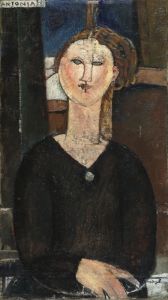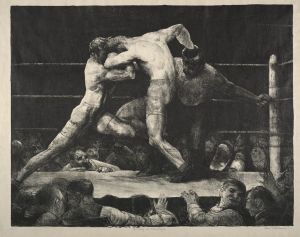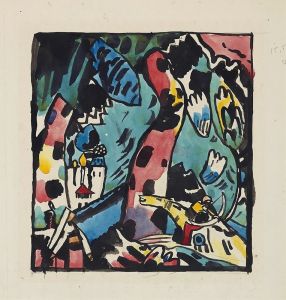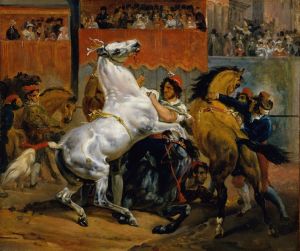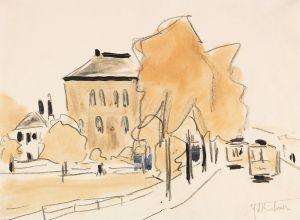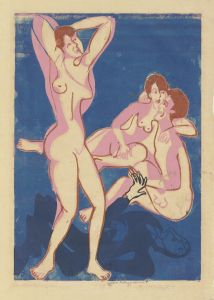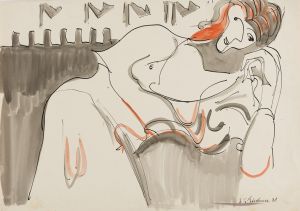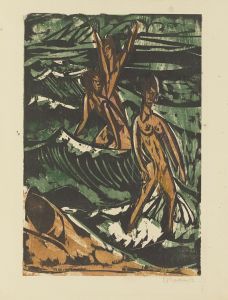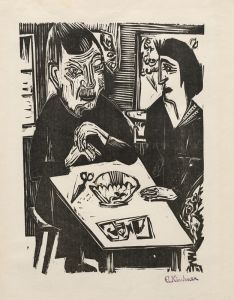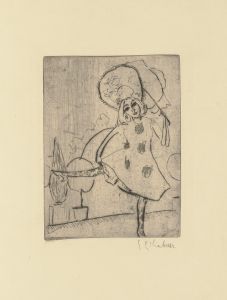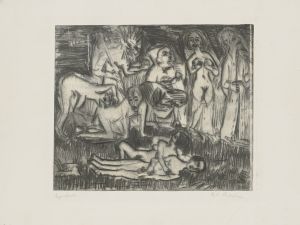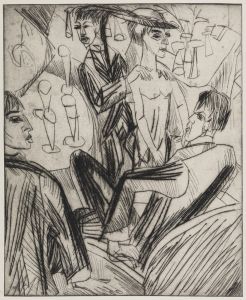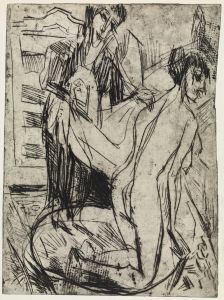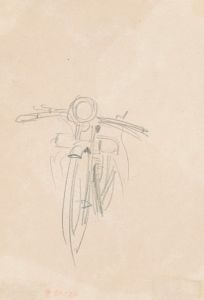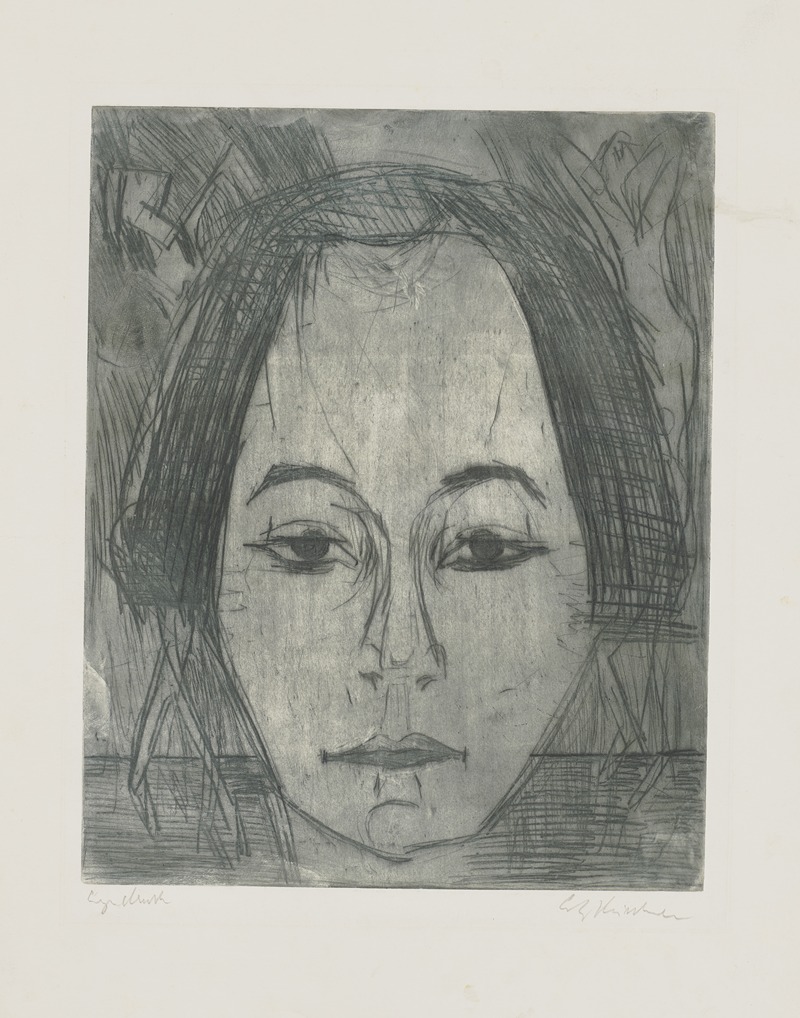
Kopf der Tänzerin
A hand-painted replica of Ernst Ludwig Kirchner’s masterpiece Kopf der Tänzerin, meticulously crafted by professional artists to capture the true essence of the original. Each piece is created with museum-quality canvas and rare mineral pigments, carefully painted by experienced artists with delicate brushstrokes and rich, layered colors to perfectly recreate the texture of the original artwork. Unlike machine-printed reproductions, this hand-painted version brings the painting to life, infused with the artist’s emotions and skill in every stroke. Whether for personal collection or home decoration, it instantly elevates the artistic atmosphere of any space.
Ernst Ludwig Kirchner was a prominent German expressionist painter and one of the founding members of the artist group Die Brücke (The Bridge), which played a pivotal role in the development of modern art in the early 20th century. Kirchner's work is characterized by its bold use of color, dynamic compositions, and emotional intensity. One of his notable works is "Kopf der Tänzerin" (Head of the Dancer), which exemplifies his unique style and artistic vision.
"Kopf der Tänzerin" was created during a period when Kirchner was deeply influenced by the vibrant cultural life of Berlin, where he moved in 1911. The city was a hub of artistic innovation and experimentation, and Kirchner was particularly fascinated by the dynamic energy of urban life, which he sought to capture in his art. This painting reflects his interest in the human figure and movement, themes that were central to his work.
The painting depicts the head of a dancer, rendered in Kirchner's distinctive expressionist style. The use of bold, exaggerated lines and vivid colors conveys a sense of movement and emotion, capturing the essence of the dancer's performance. Kirchner often drew inspiration from the cabaret and dance scenes of Berlin, where he found a rich source of subject matter for his art. The dancer's head is portrayed with an intensity that reflects both the physicality and the emotional depth of the performance.
Kirchner's approach to portraiture was not focused on realistic representation but rather on expressing the inner life and vitality of his subjects. In "Kopf der Tänzerin," the emphasis is on the expressive qualities of the face and the dynamic use of color and form. The painting is a testament to Kirchner's ability to convey the spirit of the modern age through his innovative use of the medium.
Throughout his career, Kirchner was influenced by various artistic movements, including Impressionism and Post-Impressionism, but he developed a unique style that set him apart from his contemporaries. His work often explored themes of modernity, alienation, and the human condition, reflecting the complexities of life in the early 20th century.
"Kopf der Tänzerin" is an example of Kirchner's exploration of these themes, as well as his interest in the expressive potential of color and form. The painting is part of a broader body of work that includes portraits, landscapes, and scenes of urban life, all of which demonstrate his commitment to capturing the essence of his time.
Kirchner's contributions to the art world were significant, and his work continues to be celebrated for its innovation and emotional depth. "Kopf der Tänzerin" remains an important piece within his oeuvre, illustrating his mastery of expressionist techniques and his ability to convey the vibrancy of human experience through art.
In summary, "Kopf der Tänzerin" by Ernst Ludwig Kirchner is a striking example of expressionist portraiture, reflecting the artist's fascination with movement, emotion, and the modern world. Through his bold use of color and form, Kirchner captures the essence of the dancer, offering viewers a glimpse into the dynamic cultural life of early 20th-century Berlin.





